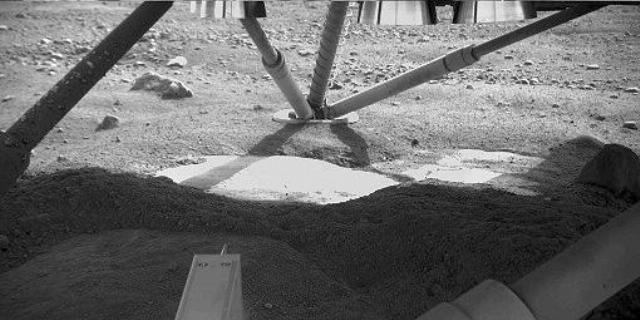In the next decade, Earth's key space player plans to reach Mars. Scientists, in turn, expect to find life there, which poses a very difficult problem. Martian life will have to be reliably distinguished from terrestrial life brought there by human spacecraft. New work has shown that contamination of the fourth planet by bacteria from the third is very difficult to prevent — if at all possible.
Traditionally, space agencies sterilize the vehicles they send into space, especially if they need to reach other celestial bodies. At the same time, they are heated to +120-200 Celsius. Even the rooms where they are assembled are regularly sterilized. For this, hydrogen peroxide, alcohol, UV lamps, and HEPA filters for incoming air are used (so small that they trap bacteria and individual viruses).
All these steps have serious reasons. Earth's history is full of examples of invasive organisms entering someone else's ecosystem and seriously changing it. Many people assume the simplest life on Mars: fluctuations in the level of methane and oxygen in the surface layers indicate this. It would be very nice to explore it, being sure that it is local and that its evolution took place without the influence of terrestrial competitors.
Now, researchers from the United States have discovered that bacteria of the Tersicoccus phoenicis species are, in practice, poorly detectable from clean rooms where spacecraft are being assembled, as well as, probably, from the spacecraft themselves. The results of their work were published in Microbiology Spectrum.
Tersicoccus phoenicis in Latin means "Phoenix coccus from a clean room." These bacteria (from the actinomycetes group) got their name precisely because they were discovered in NASA's clean rooms, and also on the body of the Phoenix Mars landing spacecraft, which was assembled there. However, it was later found in a clean room in South America, meaning it is found in this class of space industry spaces all over the world. Apparently, something in their conditions suits him — despite the sterilization measures and low humidity.
The authors of the new work have established that this species is adapted not only to such a hostile environment, but also to attempts to track it down in it. So far, sterilization in clean rooms has been checked by taking samples from surfaces and seeding them on laboratory bowls with nutrient solution.
However, Tersicoccus phoenicis turned out to be almost invulnerable to this method: a week after hibernation, due to adverse conditions, only 1-4 out of a million such bacteria "revived" and began to feed in laboratory bowls. But this did not mean that the remaining million were dead as a result of sterilization. Even after 83 hours in it, the growth was exceptionally weak.
Earlier sterility checks simply didn't take that long, so they couldn't detect the survival of this stubborn species. The researchers tried to shorten the reaction time by injecting a special protein from the bacterium Micrococcus luteus, related to Tersicoccus phoenicis, onto laboratory bowls. It accelerates the restart of bacterial activity: after 31 hours in the bowl, the "pretending to be dead" representatives of this species began to grow anew.

The Phoenix spacecraft landed on Mars in 2008. It is easy to see that the gases from its landing engines have blown away the regolith, under which there is something white, most likely water ice. That is, Tersicoccus phoenicis is highly likely to have already encountered Martian water, at least in solid form. Was there a liquid somewhere nearby in which the bacterium could try to survive?
Image source: Wikimedia Commons
The scientists emphasized that the entire group of actinobacteria has similar survival mechanisms in adverse conditions. This means that other species may have the same feature. That is, it is impossible to correctly determine whether a particular room or spacecraft has been cleared of them with today's approaches. The situation can be improved by the "resuscitation" protein from Micrococcus luteus, but it is still unclear whether it acts on all potential "violators".
Note that in the 2030s, SpaceX is planning such large-scale landings on the fourth planet that it will be very difficult to keep it free of terrestrial organisms. It is all the more important to consider in advance what types of bacteria could have got to Mars with NASA's automatic vehicles before that.
Otherwise, biologists risk discovering on Mars another type of bacteria like Tersicoccus phoenicis, unknown to science until very recently, but which effectively survives sterilization or in a dry and cold Martian environment.

